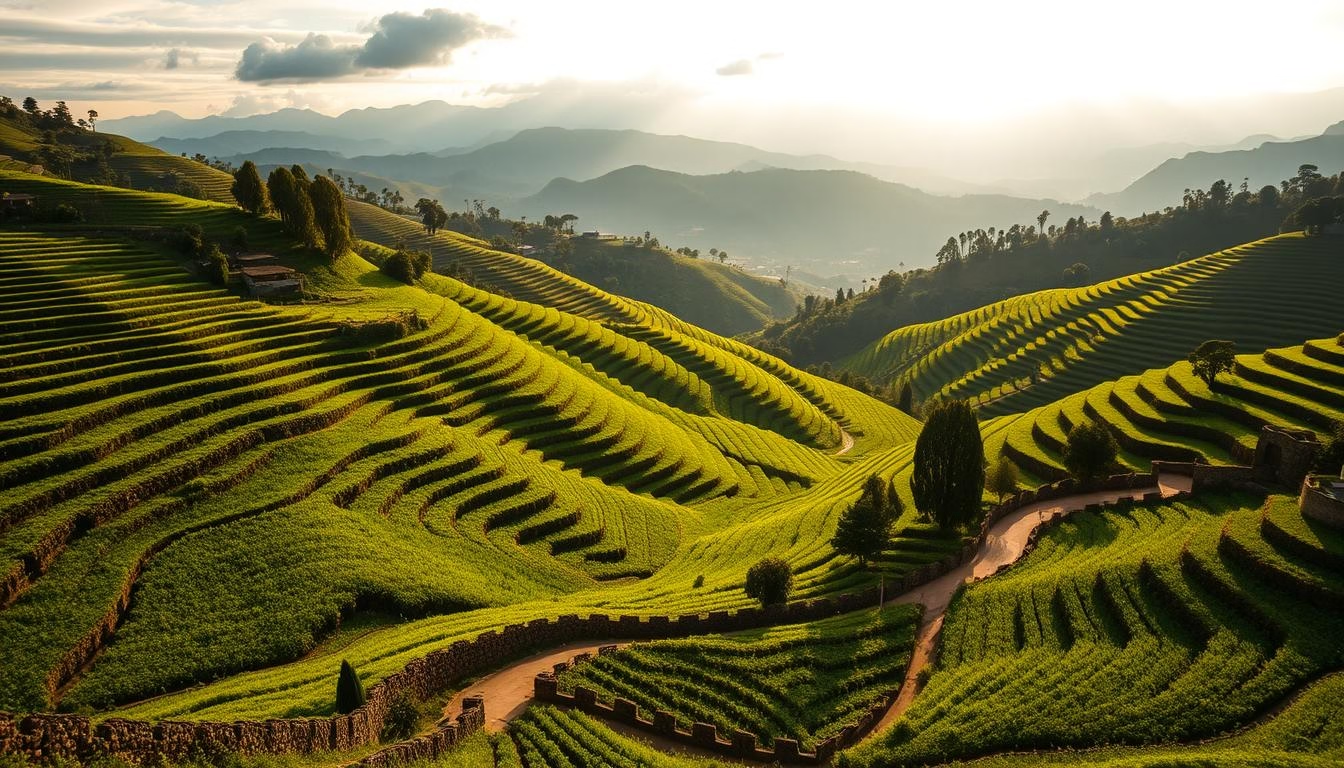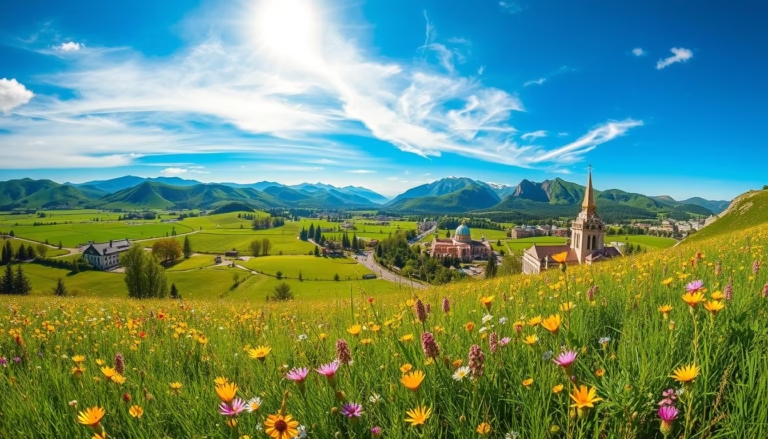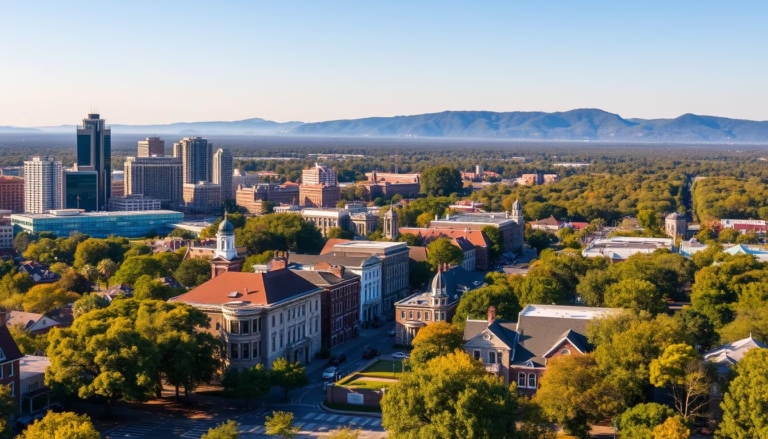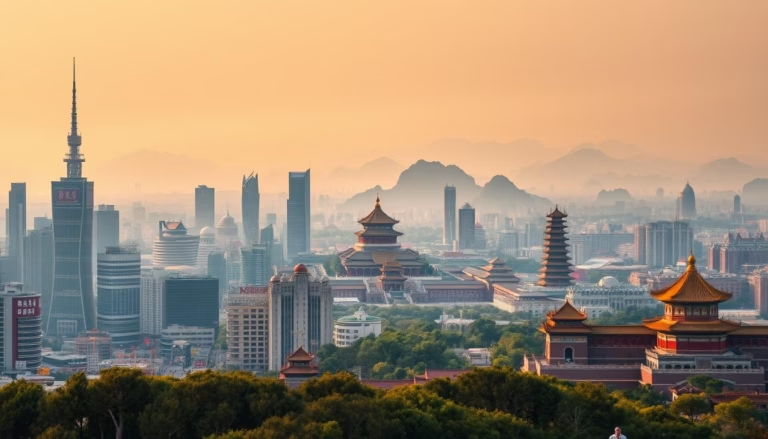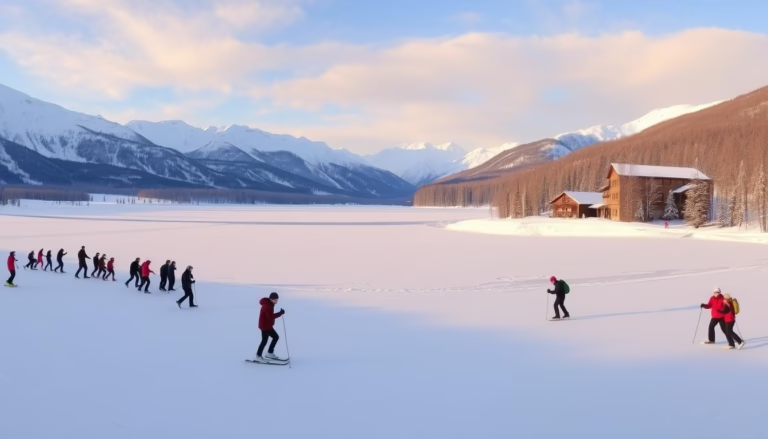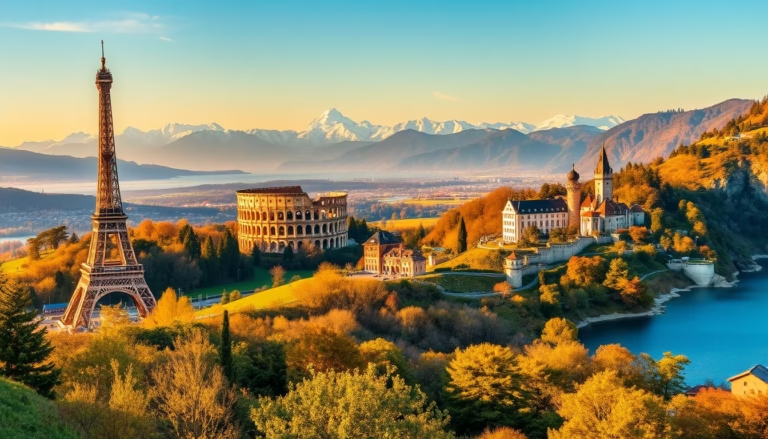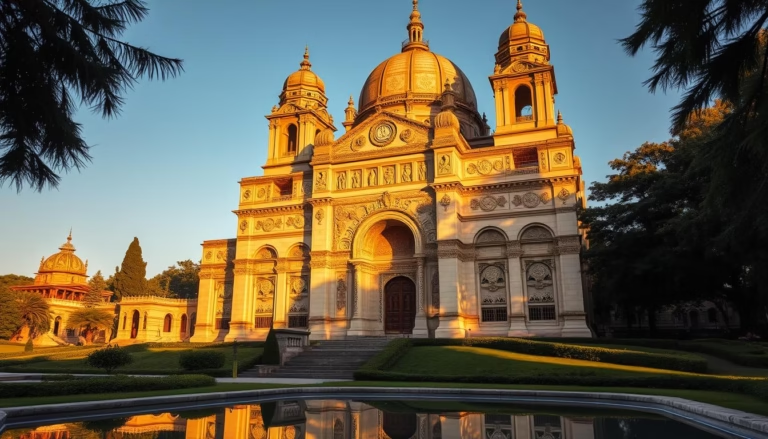Incredible Terrace Fields: A Marvel of Agricultural Heritage
Step into a world where steep slopes become fertile ground through human creativity. For thousands of years, communities have shaped mountainsides into cascading farmland. These stair-like landscapes represent one of humanity’s oldest solutions to farming in challenging environments.
Ancient farmers transformed rocky hills into productive plots using stone walls and irrigation systems. Their methods prevented soil erosion while capturing rainwater. This approach turned unworkable terrain into spaces for growing crops and raising animals.
Building these layered fields required immense effort. Workers moved tons of earth by hand, creating flat areas where none existed naturally. Their hard work supported entire civilizations by providing reliable food sources.
Today, these agricultural wonders serve dual purposes. They produce food for local people while attracting travelers seeking beauty and cultural insight. From Asian rice paddies to South American mountain farms, each site tells a story of adaptation.
Key Takeaways
- Terraced farming solved problems like poor soil and water management for ancient cultures
- Construction required manual labor to reshape entire landscapes
- Prevented erosion while maximizing agricultural output
- Remains vital for food production and cultural preservation today
- Found across continents with unique regional designs
Understanding Terraced Agriculture: History and Innovation
Mountains once seen as barriers became breadbaskets through layered farming. This agricultural revolution began years ago when communities faced steep slopes and limited flat land. Their solution? Carving stair-like plots that transformed harsh landscapes into productive spaces.
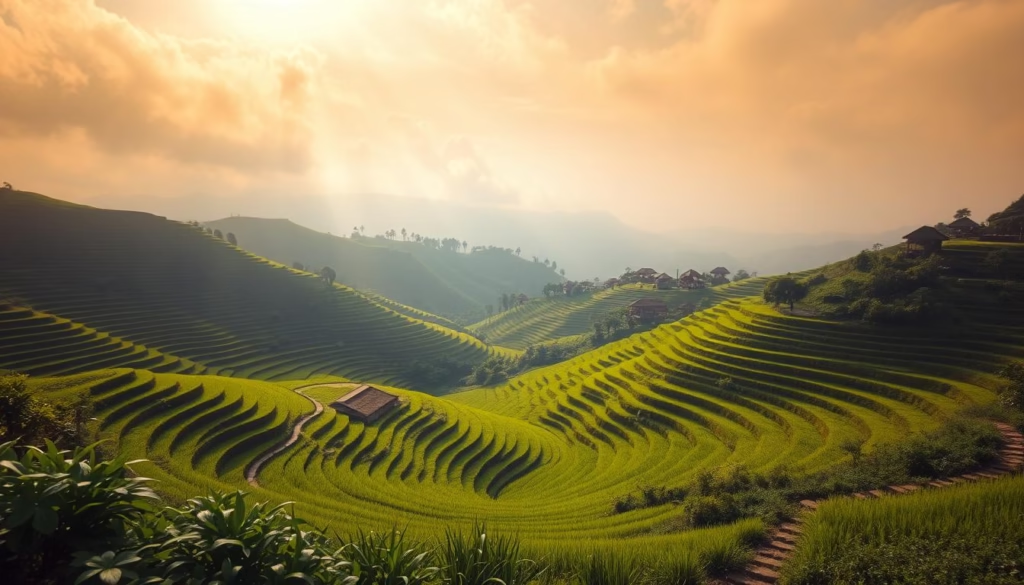
The Evolution from Ancient Techniques
Early farmers discovered that stepped designs could capture rainwater and slow erosion. In Asia, terraced rice systems emerged as early as 2,000 years ago. Workers built stone walls to create flat areas where rice thrived in water-logged conditions. These methods spread globally, with cultures adapting techniques to local crops like potatoes and grapes.
Engineering Ingenuity Across Cultures
Three key innovations shaped these farming systems:
- Gravity-fed irrigation using mountain streams
- Multi-level drainage to prevent waterlogging
- Strategic crop rotation patterns
From the Andes to Indonesian islands, farmers developed distinct styles. Philippine rice paddies use mud dikes, while Moroccan orchards employ underground water channels. Each design reflects deep understanding of local climate and soil.
“Our ancestors taught us to work with the land, not against it.”
These time-tested methods still influence modern agriculture. They prove that ancient solutions can address current challenges like water conservation and soil health.
Exploring Incredible Terrace Fields Across Continents
Earth’s mountainous regions reveal humanity’s talent for turning challenges into opportunities. Farmers worldwide crafted stair-shaped plots that feed communities while creating visual wonders. These living landscapes blend practicality with artistry across six continents.
Showcasing Global Diversity
Each area developed unique solutions based on climate and culture. Southeast Asian rice systems glow green during growing seasons. Mediterranean slopes turn golden with ripening wheat. South American stone-walled terraces climb mountains like ancient staircases.
Three factors shape these agricultural masterpieces:
- Local building materials (stone, mud, or wood)
- Primary crops (grains, tubers, or vines)
- Water management techniques
| Region | Signature Crop | Distinct Feature |
|---|---|---|
| Andes Mountains | Potatoes | Inca stonework |
| Bali | Rice | Subak water temples |
| Douro Valley | Grapes | Vineyard slopes |
These places attract over 15 million tourists yearly. Visitors photograph sunrise views over flooded rice paddies and hike through historic farming valleys. Many locations now balance crop production with guided tours and cultural festivals.
The beauty of these landscapes proves sustainability and aesthetics can coexist. They remind us that human ingenuity often flourishes in unlikely settings.
Iconic Rice Terraces of Asia
Asia’s rice terraces blend farming mastery with breathtaking artistry. These living landscapes showcase generations of agricultural wisdom, where every curve follows nature’s rhythm. Farmers across the continent transformed hillsides into edible staircases that feed millions while captivating travelers.
Vietnam’s Living Landscapes
In northern Vietnam, the Muong Hoa Valley cradles Sa Pa’s cascading rice paddies. Local Hmong and Dao communities plant crops beneath Fansipan, Southeast Asia’s highest peak. Just east lies Mu Cang Chai, where Yen Bai province shines brightest from mid-September to October. During harvest, the yellow color of ripe grains turns slopes into golden stairways.
Bali’s Green Masterpieces
Twenty minutes from Ubud, Tegalalang’s rice fields dazzle with geometric precision. Towering palms frame emerald-green levels fed by ancient irrigation. Farmers here still use traditional tools, creating patterns that change with each growing season.
China’s Mountain Canvas
The UNESCO-listed Yuanyang terraces climb China’s Ailao mountain range like liquid mirrors. Hani farmers flood their plots winter through spring, creating reflective surfaces that catch sunrise hues. Over 1,000 years of cultivation shaped these 113-square-mile wonders.
| Location | Highlight | Best Time |
|---|---|---|
| Mu Cang Chai | Golden harvest views | Sept-Oct |
| Tegalalang | Jungle-framed paddies | Year-round |
| Yuanyang | Mirror-like water terraces | Nov-Apr |
Visitors should time trips with local festivals for full cultural immersion. Many villages offer homestays, letting guests wake to misty valley views. These sites prove that practical farming can create lasting beauty.
Ancient Marvels: Terraced Fields of the Inca Empire
High in the Andes, the Inca Empire solved farming challenges with stone-walled masterpieces. Their terraced fields turned vertical slopes into productive farmland. These engineering feats fed millions while shaping mountain ecosystems.
Machu Picchu’s Mystique
The lost city’s narrow agricultural platforms cling to cliffs like stone ribbons. Workers carved over 700 terraces using bronze tools, creating flat spaces for potatoes and maize. An water network of channels still directs mountain springs to crops below.
Pisac and Ollantaytambo Heritage
Pisac’s 16 farming zones showcase Inca crop science. Farmers today grow quinoa on the same plots their ancestors built. Nearby, Ollantaytambo’s stepped fields climb valley walls. Emperor Pachacuti used these slopes for royal ceremonies and food production.
“Each stone tells a story of survival in thin air and rocky soil.”
Three key sites reveal Inca farming wisdom:
| Location | Feature | Crops |
|---|---|---|
| Machu Picchu | 700+ stone terraces | Potatoes, maize |
| Pisac | 16 cultivation zones | Quinoa, beans |
| Ollantaytambo | Royal ceremonial terraces | Ancient grains |
These sites served as more than farms. Terraces controlled erosion during rains and provided defense barriers. Nearby villages still use Inca planting methods passed down through years.
Visitors to the Sacred Valley can walk ancient paths between these living fields. The town of Ollantaytambo offers guided tours showing how terraces transformed mountain life.
European Elegance: The Douro Valley and Beyond
Portugal’s Douro Valley unfolds like a living painting where agriculture meets artistry. This UNESCO World Heritage site demonstrates how steep riverbanks became a canvas for viticulture. Centuries of human effort shaped its slopes into functional beauty that evolves with the seasons.
Terraced Vineyards and Seasonal Transformations
The valley’s terraces climb hillsides at dizzying angles, their stone walls cradling grapevines since Roman times. These engineered slopes create ideal conditions for port wine production. Local farmers still maintain ancestral techniques while welcoming travelers exploring the region’s Douro Valley travel guide highlights.
Four seasonal acts define the valley’s rhythm:
- Spring’s vibrant greens as new leaves emerge
- Summer’s deep emerald canopies shading ripening grapes
- Autumn’s fiery red and gold foliage during harvest
- Winter’s stark beauty revealing intricate stonework
February brings delicate almond blossoms, their pink-white flowers dotting the landscape. By October, vineyards blaze with color – a photographer’s paradise. The layered design isn’t just pretty. It prevents erosion and creates microclimates that yield world-class grapes.
Visitors can cruise the Douro River for panoramic views or hike trails winding through vineyard terraces. Each turn reveals new perspectives on this engineered masterpiece that feeds both body and soul.
Innovative Uses of Terrace Fields in Agriculture
Farmers across generations have transformed slopes into life-sustaining systems that tackle modern challenges. These layered landscapes now combine ancestral wisdom with cutting-edge solutions, proving their relevance in our changing world.
Water Conservation and Soil Management
Bali’s subak system shows how communities work with nature. For two millennia, this cooperative network has shared water through carved channels and synchronized planting. Farmers meet monthly to balance needs across hundreds of rice paddies, preventing disputes over resources.
In Vietnam’s Sa Pa region, cool climates limit farmers to one annual rice crop. New drought-resistant varieties now help stretch growing seasons. “We’re blending old stone walls with smart irrigation,” says local grower Mai Linh. “Every drop counts when feeding families.”
Modern Adaptations in Farming
Urban planners are adopting terrace principles for rooftop gardens and vertical farms. Tokyo’s skyscraper greenspaces and Mexico City’s chinampas (floating gardens) demonstrate this ancient technique’s versatility.
Three key innovations reshaping terraced agriculture:
| Method | Application | Benefit |
|---|---|---|
| Sensor-based irrigation | Philippine rice terraces | 30% water savings |
| Intercropping | Andean potato fields | Disease resistance |
| AI yield prediction | Chinese mountain farms | Improved harvests |
From Peru’s quinoa terraces to Swiss alpine herb gardens, these systems keep evolving. They prove sustainable farming isn’t just possible – it’s essential for feeding growing populations.
The Cultural Tapestry in Terraced Villages
Beyond their agricultural marvels, terraced landscapes cradle vibrant cultures shaped by generations of stewardship. These living communities weave farming practices with ancestral traditions, creating unique social fabrics across mountain regions.
Living Heritage in Action
In Vietnam’s Sa Pa district, rice and corn grow alongside rich traditions. Hmong and Dao people maintain intricate embroidery techniques while tending their plots. Women’s indigo-dyed clothing mirrors the deep blues of twilight over the rice fields.
China’s Guizhou province hosts over 15 ethnic groups in its terraced villages. Miao silver headdresses clink softly as farmers plant seedlings. Zhuang musicians play reed pipes during harvest celebrations, their melodies echoing through layered paddies.
The Philippines’ Banaue rice terraces reveal another chapter. Ifugao tribes carved these slopes by hand over 2,000 years ago. Their stone-walled systems still feed families today, blending practicality with spiritual respect for the land.
Visitors find more than beauty in these places. They discover living museums where daily life preserves ancient wisdom. From shared irrigation rituals to harvest festivals, every tradition strengthens community bonds forged through centuries of cultivation.
